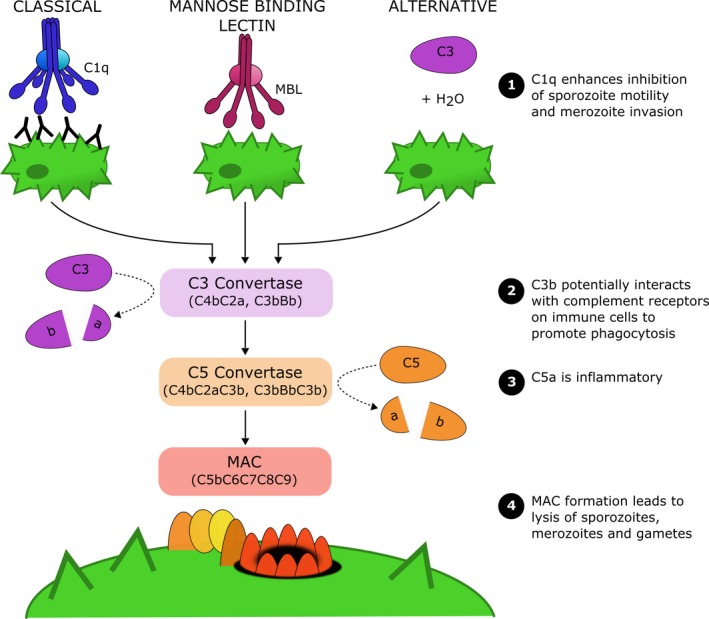Figure 2.

Complement activation pathways. The complement system can be activated by three distinct pathways termed the classical, mannose‐binding lectin and alternative pathways. Complement activation via any pathway leads to formation of C3 convertase, which cleaves C3 into the active C3a and C3b fragments. Subsequently, the C5 convertase molecule is generated, which cleaves C5 into the activate C5a and C5b fragments. C5b, together with C6, C7, C8 and multiple C9 monomers create the membrane attack complex (MAC) that deposits in the target cell membrane and causes cell lysis. Several complement proteins mediate anti‐malarial immunity, including: (1) C1q enhances antibody‐mediated neutralization of sporozoites and merozoites, (2) C3b can mediate opsonic phagocytosis and is a potential anti‐malarial immune mechanism, (3) C5a is pro‐inflammatory, and (4) MAC formation can lyse sporozoites, merozoites and gametes
